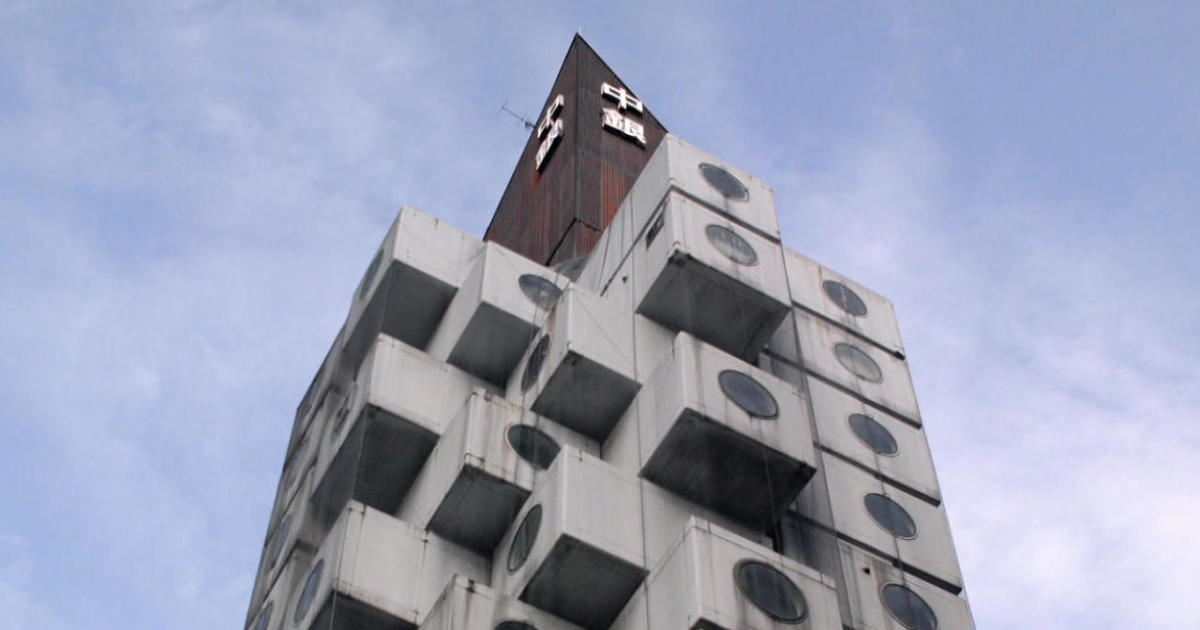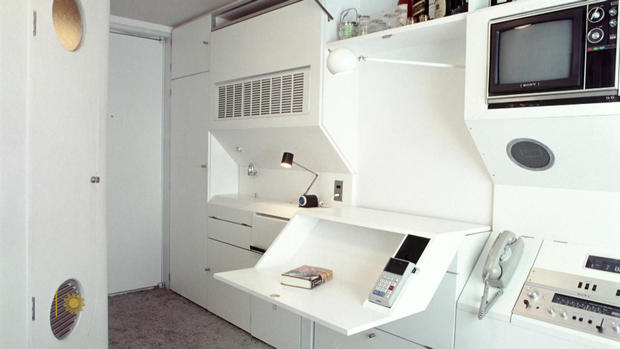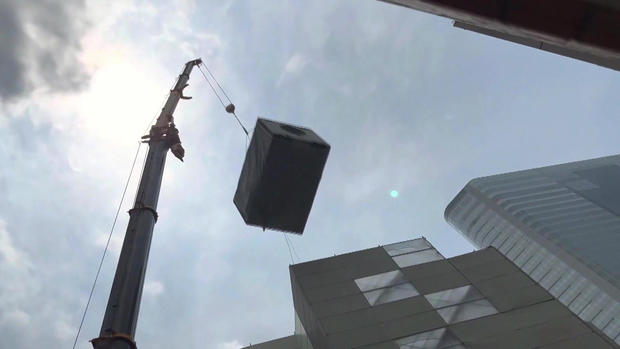The farewell salute went on for months: Locals and visitors aiming their cameras across a busy freeway for a last shot of Tokyo’s Nakagin Tower. “My hotel just happens to be around the corner, so I thought I’d make a pilgrimage before it totally disappears,” said Nick Lockley, who was in the neighborhood on a business trip.
CBS News
Nakagin Tower is actually 140 stacked pods, or capsules, in the heart of downtown. Completed in 1972, they were marketed as stripped-down urban retreats.
CBS News
This capsule sits in the grounds of the Saitama Museum of Modern Art, which itself was designed by the same architect, Kisho Kurokawa, a pioneer of modular architecture, like the Beautillion at the 1970 Osaka World’s Fair. Kurokawa imagined Nakagin’s capsules as cells with a finite lifespan, a style that he called Metabolism.
“The idea was to remove the capsules every 20 to 25 years and replace it,” said Yuka Yoshida, an architectural tour guide in Tokyo. “The whole Metabolism theory was very sustainable kind of idea, which was quite new back then in 1972.”
But by the time correspondent Liz Palmer visited, demolition of Nakagin Tower had begun. Fifty years had taken their toll on this unique landmark: The capsules were too hard to replace, and they were full of asbestos.
CBS News
Palmer asked Yoshida, “So it was famous from the beginning, because so many people drove by it and it would have been just sticking out on its own, this crazy, visionary, futuristic thing?”
“Definitely. Probably had blown people’s minds,” she replied.
Not only the outside, but the inside, too, with its (for the time) ultra-modern interior features, including a Trinitron TV.
CBS News
Over the years Tatsuyuki Maeda, a lover of Japanese modern architecture, bought 15 of the capsules, and he led the campaign to save Nakagin. But having lost that battle, he rented an apartment across the street to watch the tower come down, surrounded by memorabilia and memories.
“As an owner,” he said, “I was part of a unique community. It was wonderful.”
As the years went by, the capsule owners often personalized their spaces into hideaways, workrooms, a Japanese tea room, and even, during the pandemic, a DJ’s studio.
CBS News
Palmer asked, “Now you’re watching it come down. Are you fascinated or heartbroken, or a bit of both?”
“Of course I’m sad,” Maeda replied. “But many of these capsules are bound for a new life in Japan and abroad. And I’m excited by that.”
The plan is to carefully remove the best pods, refurbish them, and give them away, which means one of these ’70s time capsules could be coming soon to a museum near you.
CBS News
Story produced by Lucy Craft. Editor: Randy Schmidt.










